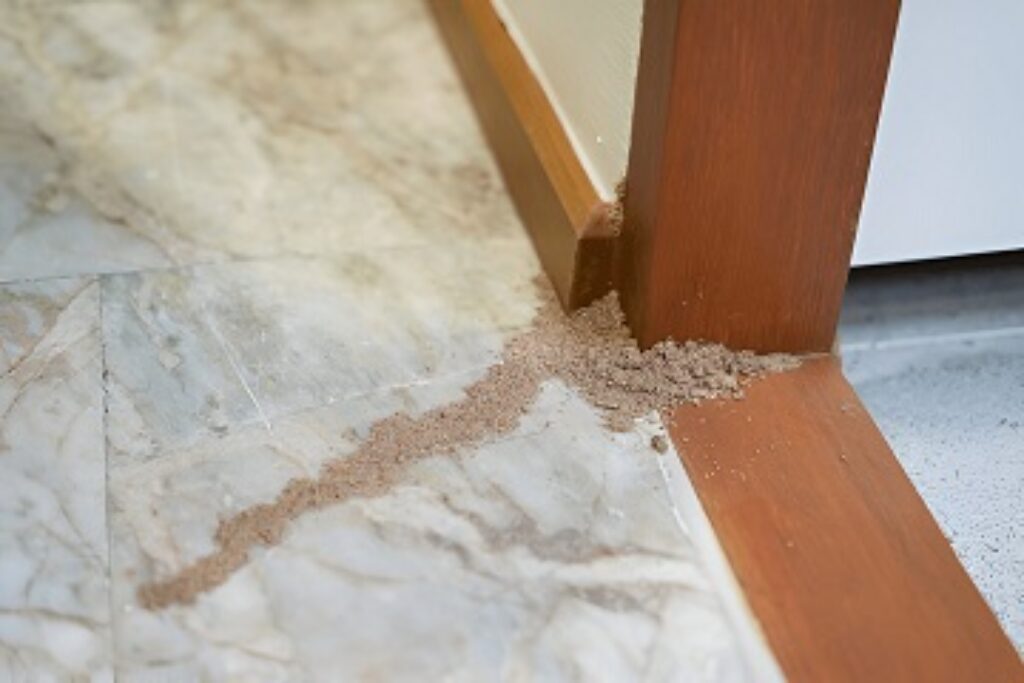Termites are tiny, yet the havoc they wreak can lead to a lot of money being spent on the repair of houses. Each year, Americans shell out thousands of dollars just to be able to repair the damage caused by termites. While many are sure of their home insurance to safeguard them from such unexpected repair costs, there is always the question of whether termite damage is covered, hence the confusion.
Sadly, most standard homeowners’ insurance doesn’t cover repairs caused by termite infestations or any structural harm that results from them because these infestations are preventable through regular maintenance. Thus, the main result of this is that property owners bear the main part of the expenses. In this paper, we will explain the reasons most home insurance does not cover termite damage, the cases where exceptions may be, and how citizens may facilitate the process of protecting their houses through the use of preventive pest control and additional coverage options.
Table of Contents
Is termite damage covered by my insurance policy?
Most homeowner policies do not cover termite damage. The NAIC states that termite issues are preventable and thus not the insurance company’s responsibility. Unlike sudden things like fire or storms, termite damage happens over time, so it is left to the homeowner to take proper care of their house.
Insurers consider pest control as part of routine upkeep. If termites cause severe damage, homeowners must bear repair costs. Examination and removal expenses usually earn no reimbursement either.
However, rare exceptions exist where termites directly cause sudden accidents that are covered, such as water damage from a collapse. Insurance coverage differs based on specific policies.
Homeowners should regularly inspect and take care of their homes against termites. In some places with high activity levels, special insurance or “termite bonds” can be bought. Home insurance terms must always be read carefully, and any unclear parts must be discussed with agents to understand pest damage coverage fully.
Can damage from termites be insured under homeowners’ policies?
Standard coverage usually does not include damage caused by termites. However, there can be rare instances where it may provide some protection. For instance, if termites nibble on cords and ignite an unpredicted inferno, the insurance might compensate for the fire loss. The particular aspects of the policy significantly influence coverage.
Generally, in such cases, the policy will cover the resulting damage, like fire or collapse, but not the costs for termite treatment or repair of the damage caused by termites. The specific details of the policy greatly determine coverage.
To understand the insurance coverage better, it is important to go through the homeowner’s insurance agreements carefully. Pay attention to the exclusions and covered risks, as well as anything about infestations or gradual damage. If there is anything that seems unclear, it is advisable to get in touch with the insurance provider for assistance concerning the situations that could qualify for a claim and whether it is possible to get extra coverage for pest-related risks.
Protecting Your Home Against Termites
Termites are sneaky pests that can hide out for years before breaking into your house. They hurt wooden poles, beams, and even items made of cotton and paper. The delay can last anywhere from three to eight years. Thus, they often cause big damage, while the homeowner is unaware.

Homeowners are usually not insured for the damage that termites can cause. Hence, avoiding them is the best way to protect yourself. So, below are tips to help you prevent termites in your house.
The first step is to eliminate moisture. Termites love damp areas, so fix the rainwater drainage pipes, gutters, and channels that drain away from the foundation. Additionally and very importantly, inspect the wooden parts of your house every now and then for signs of termites.
Secondly, do not allow the wooden parts of your home to come into direct contact with the soil. There should be an 18-inch gap between the soil and the wooden structures. Remove any wooden trash that makes contact with the foundation; this way, it will be very hard for termites to reach your home.
Get yearly termite checks if you live where there’s many. Catching them early is key. By being careful you can avoid a lot of the damage and cost.
How to Treat Termite Damage
For termite damage, please speak with an expert. The expert will check for term /who collects/ the degree of damage and should suggest treatments. This could be through fumigation or other methods. After treatment repair loss of wood or structures.
It is important, after this, for follow-up inspections and seal possible entry points too. Minimizing moisture near the foundation also helps prevent termites getting back again.
Taking quick action will limit damages and help keep you from future infestations.
Conclusion
Termite infestations may be expensive every time and it can be stressful yet they are rarely taken care of insurance policies designed for homeowners. The burden falls unto you if your house should stay protected from termites that a lot of people can’t afford repairs by doing regular checks.
Detecting them early, inspecting regularly and preventing measures will keep away the pests let me help you- when in doubt call a licensed pest control around or over again.







